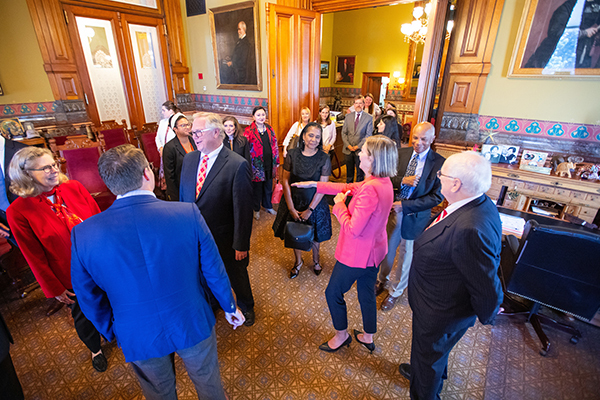June 23 marks 50 years since President Richard Nixon signed a set of amendments to the Higher Education Act of 1965, one of which created the federal Basic Educational Opportunity Grant, known today as the Pell grant (renamed in 1980 for its sponsor, Rhode Island Sen. Claiborne Pell). Pell reasoned that a lack of financial wealth shouldn't keep a capable, talented, driven person from attending college.
In its 50-year history, more than 80 million low- and moderate-income students have received Pell grants.
During the 2021-22 academic year at Iowa State, 5,188 or one in five undergraduates -- 74% of them Iowa residents -- received a Pell grant, totaling more than $23.5 million in student aid. In the last 10 academic years, 28,766 Iowa State students received more than $255 million in Pell grant aid.
Director of student financial aid Roberta Johnson, who began her undergraduate years at Luther College in Decorah before completing her degree at Iowa State, is among the 80 million students who benefitted from the program.
"As one of five siblings in a family that sometimes struggled to make ends meet, the Basic Educational Opportunity Grant was foundational in helping me achieve my dream of a college education," Johnson said.
"It has been gratifying to spend the last 40 years administering the program that made such a huge difference in my educational journey, assisting students seeking the same goal I had decades ago."
Emily Olson, assistant director of student services for the College of Liberal Arts and Sciences, said her Pell grant greatly reduced her student loan debt when she graduated from St. Olaf College, Northfield, Minnesota.
"As a first-generation, low-income student, I didn't know how I would pay for college, only that I was expected to go," she said. "The Pell grant I received helped alleviate some of the financial burden of college."
The Association of Public and Land-grant Universities, of which Iowa State is a member, is a leader in the #DoublePell alliance that's working to persuade Congress to double the size of the maximum Pell grant ($6,895 for the coming year) to help more students with a demonstrated financial need earn a college degree.

